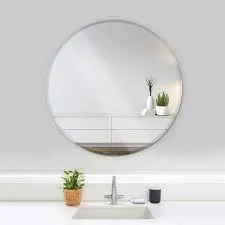

Understanding Tempered Insulated Glass Units
Tempered insulated glass units, commonly referred to as tempered IGUs, are an essential component in modern building architecture and design, combining safety, efficiency, and aesthetic appeal. As contemporary buildings prioritize sustainability and energy efficiency, the demand for high-performance glazing solutions continues to rise, making tempered IGUs a preferred choice.
What are Tempered Insulated Glass Units?
Tempered insulated glass units consist of multiple layers of glass that are meticulously processed to enhance their strength and thermal performance. The term tempered refers to a physical strengthening process that involves heating the glass to high temperatures and then rapidly cooling it. This process dramatically increases its durability, making it up to five times stronger than standard glass.
The insulated part refers to the space between the panes, which is often filled with argon or krypton gas. This gas filling minimizes thermal transfer between the interior and exterior environments, reducing energy costs for heating and cooling and improving comfort within buildings.
The Benefits of Tempered IGUs
1. Safety and Security One of the primary advantages of tempered glass is its safety features. When broken, tempered glass shatters into small, blunt pieces, significantly reducing the risk of severe injury compared to regular glass, which fractures into sharp shards. This attribute makes tempered IGUs particularly suitable for areas where safety is paramount, such as schools, hospitals, and residential homes.
2. Energy Efficiency The insulated nature of tempered IGUs results in significant energy savings. By preventing heat transfer, these units help maintain consistent indoor temperatures. This quality becomes especially critical in climates with extreme temperature variations. Buildings equipped with tempered IGUs can see reduced energy consumption, translating into lower utility bills and a reduced carbon footprint.

3. Enhanced Aesthetics Tempered IGUs can be manufactured in various styles and sizes. Their sleek appearance and ability to be customized with tints or coatings make them an attractive option for architects and builders. The clarity and visual appeal of these units allow natural light to permeate through buildings, creating bright, welcoming environments while minimizing the requirement for artificial lighting during the day.
4. Noise Reduction The combination of double or triple glazing and the insulating gas space helps to reduce noise pollution significantly. This factor is particularly important for urban buildings located in bustling areas where sound pollution can negatively affect comfort levels for occupants.
5. Durability and Maintenance Tempered insulated glass units resist warping and deterioration due to weather or age. This durability means they require less frequent replacement, ultimately leading to lower maintenance costs over time. Many manufacturers also offer warranties on tempered IGUs, further enhancing their appeal as long-term solutions.
Applications of Tempered IGUs
Tempered insulated glass units are widely used in commercial and residential construction. In commercial contexts, they are often found in storefronts, office buildings, and public facilities, where both thermal efficiency and safety are critical. In residential settings, homeowners favor these units for windows, sliding doors, and patios, ensuring their properties are both stylish and secure.
Conclusion
In a world increasingly focused on sustainability, energy efficiency, and safety, tempered insulated glass units stand out as an exemplary glazing solution. Their unique combination of strength, thermal insulation, and aesthetic versatility makes them an invaluable investment for modern building projects. As architectural trends continue to evolve, the integration of tempered IGUs will likely play a vital role in shaping the future of how we experience spaces. Whether for new constructions or renovations, choosing tempered insulated glass units is a decision that aligns with both contemporary design principles and practical necessities.